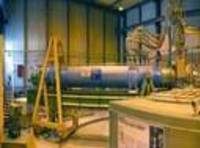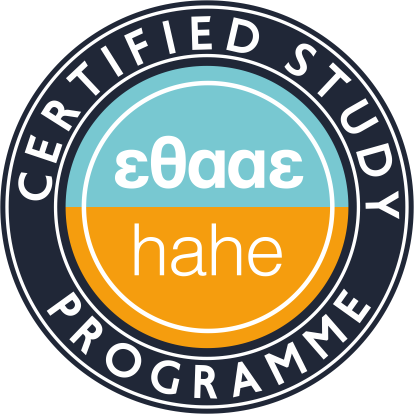Laboratory for Accelerator Physics and Instrumentation
The subject of the Laboratory of Accelerator and Instrumentation concerns the laboratory support of undergraduate and postgraduate training in Particle Accelerator and Detector Physics, as well as the support of research methods for technology development particles.
The Laboratory provides undergraduate and postgraduate laboratory training in particle detection and signal analysis, with an emphasis on the innovative organology and detection principles developed over the last decade, as well as their applications in state-of-the-art accelerator installations and other scientific and technical fields. In addition, the Laboratory supports the elaboration of research by its members as well as by postgraduate and doctoral students for the development of new detection principles and devices.
Founded by FEK: 4313/Β/11-12-2017
Contact Phone: 2310998209, 2310990592
Email: sampson at physics.auth.gr
DIRECTOR
Dimitrios SampsonidisMEMBERS
- Georgios Kitis
- Anastasios Liolios
- Charikleia Petridou
- Ilias Savvidis
- Spyridon Tzamarias
- Alexandra Ioannidou
- Konstantinos Kordas
- Stylianos Stoulos
- Christos Eleftheriadis
RESEARCH ACTIVITY
 Production of low and high energy neutron beams, from proton accelerator. Study of the cross sections of (n,γ), (n,α), (n,p) and (n, fission) interactions. Dose measurements from nutrons and γ-radiation.
Production of low and high energy neutron beams, from proton accelerator. Study of the cross sections of (n,γ), (n,α), (n,p) and (n, fission) interactions. Dose measurements from nutrons and γ-radiation.
RESEARCHERS

CAST experiment (CERN Axion Solar Telescope) is searching for the existence of solar axions. It utilizes a superconducting magnet, 10 m long and with a 9 Tesla magnetic field. Solar axions passing through the magnetic field is possible to be transformed into photons which could be detected by proper photon detectors. CAST has already improved the experimental limits by a factor of 10 and derived a limit better than the one resulting from astrophysical considerations. CAST will continue measuring up to the year 2010.
RESEARCHERS

Environmental Radioactivity: Atmospheric, Aquatic and Marine, Terrestrial. NORM: Naturally occurring radioactive materials: Uranium-238, Radium-226, Thorium-232, Potassium-40. Radon: Indoors, Outdoors, in Dwellings, in Caves. Radon: A precursor in earthquake prediction studies. Radioactive Aerosols. Radioactivity of Cosmic-ray origin: Beryllium-7, Sodium-22, Sulphur-35, Phosphorus-32, Phosphorus-33 Radioactivity in Karstic fields and Natural springs. TENORM: Technologically enhanced occurring radioactive materials. Radioactive fallout from nuclear reactor accidents: The case of Chernobyl accident. Radioactivity associated with the operation of Coal-fired power plants (CPP) Radioactivity associated with the operation of Phosphate ore processing plants (Phosphate Industries). Radioactivity of building materials. Radioecology: Radio-bio-indicators.
RESEARCHERS

The experiments concern to Nuclear Waste Transmutation of 237Np, 239Pu, 129I, 241Am, by using spallation sources of different design. Spectral measurements as well as spatial neutron and proton distributions at the source surface are performed in order to study the more efficient set up for transmutation. The experiments take place at the High Energy Lab. in Dubna, Russia, in the frame of the collaboration with European and ex-Soviet Union groups.
RESEARCHERS

Research and development of a PET system. Positron Annihilation in matter. Doppler broadening of the annihilation line (2 gamma annihilation). 3 gamma Ps annihilation. Positron lifetime in metals, amorphous alloys, semiconductors, high Tc superconductors.
RESEARCHERS

The interaction of primary cosmic ray particles with the atmosphere generates a variety of secondary particles (muons, gammas, neutrons, neutrinos...) some of which reach the surface of the Earth and they can be measured by ground based detectors. The interaction of very high energy cosmic rays with the atmosphere generates Extensive Atmospheric Showers (EAS) of secondaries. The study of EAS is on the research front and it is performed by a world-wide network of cosmic ray detectors.
RESEARCHERS

The High Energy Physics group of the AUTH which participates in the ATLAS experiment at the Large Hadron Collider (LHC) at CERN has been constructed and tested part of the ATLAS muon spectrometer. The group has developed the methodology for detector construction in laboratorial installations of international specifications and allocates the essential experimental setup and software for the control of operation of detectors with comic rays. It also developed a test node of GRID technology for the analysis, distribution and storage of data. The group is developing data analysis methods and the essential software for the study of interactions of elementary particles in the ATLAS experiment.
RESEARCHERS

TL and OSL are two basic physical effects, which allow the investigation of long lived energy levels within the band gap of insulating crystals. Furthermore, they have widespread applications in radiation protection dosimetry and archaeometry for dating and authenticity tests.
